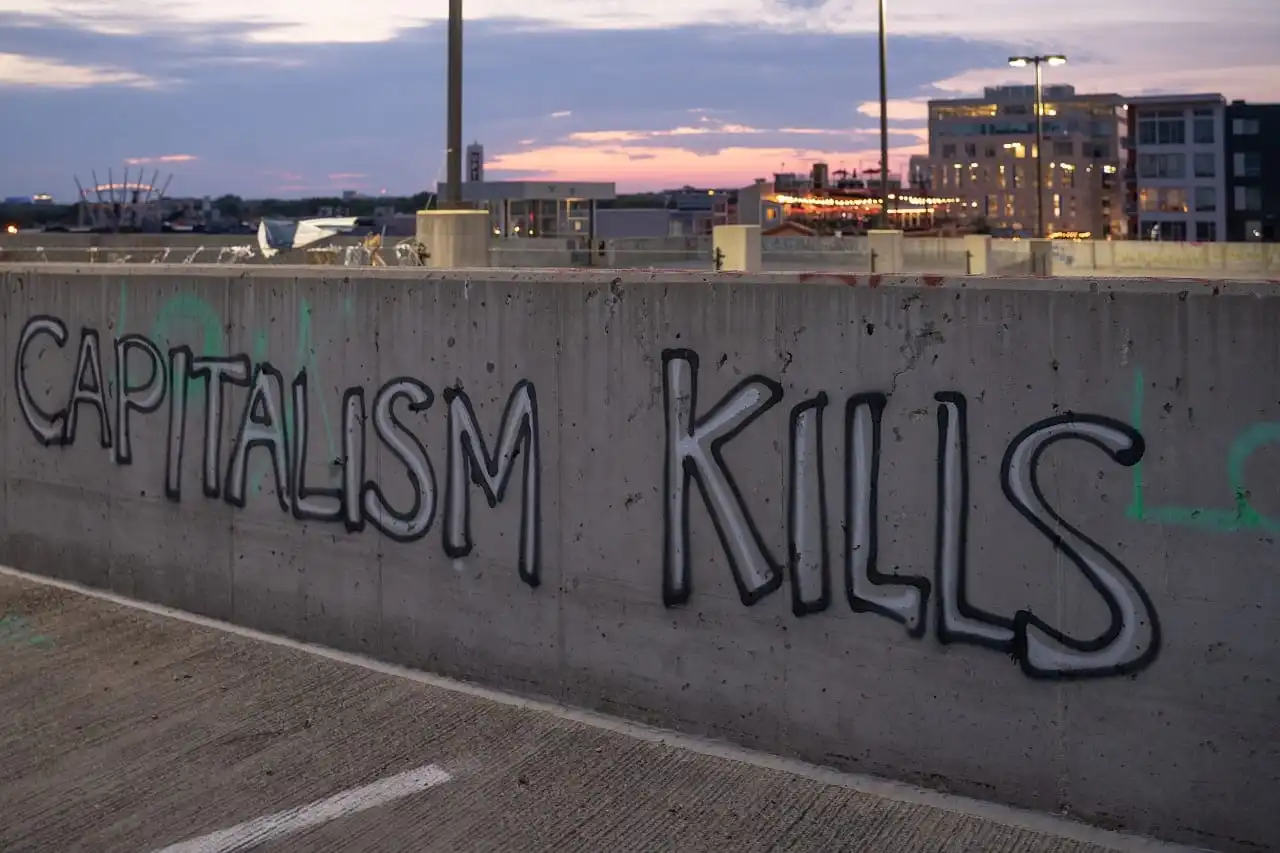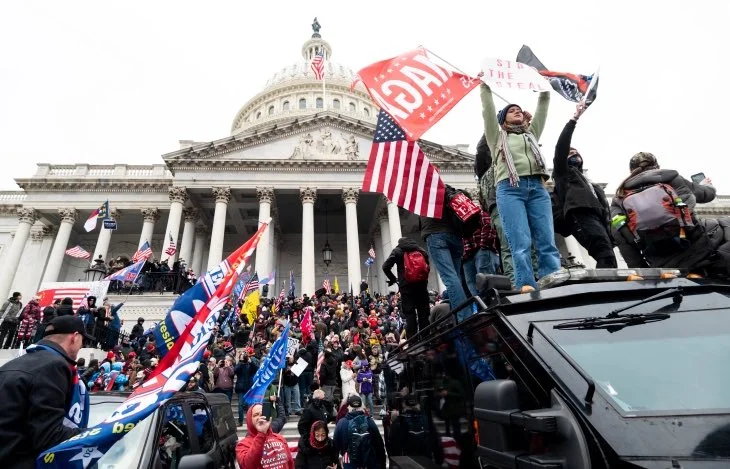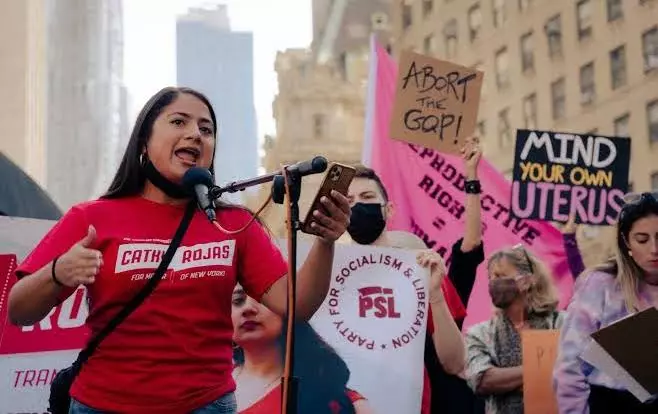Karl Marx regarded socialism’s supersession of capitalism as a natural historical process. With the evolution of production from mechanisation to automation tending to abolish the source of (exchange) value and profit – capital’s theft of commodity-producing labour’s labour time – his analysis rings ever more correct.
By looking at long- and short-term economic trends, a compelling set of evidence comes together indicating that capitalism as a mode of production is both approaching a final breakdown and birthing the foundation of a socialist mode of production.
Hyperinflationary and hyperdeflationary crises loom large. Exposing the public to the following information is of critical importance in the fight to unify the masses and minimise the barbaric consequences of the disintegration of capitalist society.
Long-term indicators
• The average global rate of profit (return relative to investment) is trending historically towards zero, having fallen from an estimated 43% in the 1870s to 11% in the 2010s.[1]
• Interest rates (interest being a form of profit) have trended downwards over seven centuries, regardless of the political-banking-legal regime. (Bank of England)
• GDP growth rates in ‘high income countries’ are trending towards zero, having averaged around 6% in the 1960s and below 2% since 2000. (World Bank)
• The post-recession recovery from the 2007-09 Global Financial Crisis (GFC) – based on unsustainable debt and a temporary shale gas boom that, according to Shell, peaked in 2019 (along with overall oil production) – has been the weakest, relatively, since WWII.
Whereas US GDP grew by 43% over the first 39 quarters of the 1991–2001 expansion, in the first 39 quarters of the expansion up to March 2019, it grew by only 22%. At that rate, the latter would have had to continue for another six years to equal the aggregate growth of 1991–2001, and nine more to match the 54% recorded in 1961–69.
• The rate of productivity growth has trended downwards over the past seven decades to near-zero.
• Between 1964 and 2014, the average lifespan of S&P 500 companies shrank from around 60 to 18 years.[2]
• From 1977 to 2013, startups as a share of all US firms fell from 16.5% to 8%. (Gallup.com)
• Of the roughly 750 currencies that have existed since 1700, only around 20% remain. (Idoneus.io)
British pound sterling has lost more than 99.5% of its purchasing power since its adoption as official currency in 1694.
The US dollar in 2018 had lost more than 96% of its purchasing power since 1913, having barely changed in the previous 140 years when the rate of the economy’s growth (relative to its size) was much higher.
The vast amount of that figure, 91%, ensued after 1949, when the US supplanted Britain as the world’s dominant imperialist superpower.
The figure since 1970 is 85% (93.5% for Britain), around the time of the first major post-WWII recession and the start of the digital/computing/automation revolution. (OfficialData.org)
Although the rate of innovation tends to slow down as the rate of profit falls (Elsby et al., 2013), the pace of innovation tends to accelerate absolutely. Computing power tends to double every 18-24 months (Moore’s Law) and total production tends to double every 25 years,[3] exponentially devaluing commodities as much less labour time is contained in each commodity, including the money-commodity.
• Production costs and consumer commodity prices have therefore trended secularly/historically towards zero.
One gigabyte of data storage, for example, fell from $193,000 in 1980 to just $0.03 in 2014.
Aerospace companies producing propulsion systems in 2010 for $24m in 24 months were by 2018 3-D printing their engines for $2,000 in two weeks.[4]
In 2000, the cost of producing one kilogram of protein through precision fermentation cost $1 million, but in 2020 the cost had fallen to around $100.[5]
• With deposits becoming shallower and deeper and extraction more capital-intensive (dependent on machinery relative to labour), the Energy Return on Investment (EROI) on fossil fuel has fallen from above 100:1 (a return of 100 units of energy for every 1 invested) in 1930 to around 3–6:1 in 2019.[6]
The labour intensity (including the labour needed to produce capital-intensive extraction machinery) of fossil fuel production and its non-renewability (constantly reproducing the industry’s demand for labour) has been vital to capitalism’s overall profitability.
The value of Saudi Arabia’s state assets, mainly in oil, is predicted to fall from $900bn to minus $2trn around 2030. (McKinsey Global Institute)
In 2015, the total debt of the oil and gas sector globally stood at roughly $2.5 trillion, 250% higher than at the end of 2006. (BIS.org)
• Just as the number of slaves in the US declined as a percentage of the population (from approx. 25% in 1790 to 16% in 1860) before slavery ended; manufacturing workers declined as a percentage of the US workforce from 26.4% in 1970 to 8% in 2018. (NCPedia.org)
Science has usurped manufacturing as the mother of production and the working class is now largely based in services instead of physical commodity production, even in South America and Sub-Saharan Africa.[7]
Whereas the capitalist class is a relatively dwindling minority of the world population, the working class has grown exponentially.
Short-term indicators
• With capitalist competition intensifying in reaction to dwindling profits, trade restrictions have been hitting record levels since 2015, before Brexit and the presidency of Donald Trump.[8]
• The medium real revenue growth of ‘FAANG’ stocks – Facebook, Amazon, Apple, Netflix and Google, comprising about 20% of the value of the S&P 500 – turned negative in 2022 for the first time. (Crescat Capital)
• 2022 was the worst year for stocks and bonds combined since 1871. Long-term US government bonds staged the biggest drop since 1788. (FT.com)
• Almost half, 43%, of around 9,000 US commercial banks disappeared between 2000 and the end of 2017 – already down from 14,000 in 1986 and 30,000 in 1921. (Yahoo Finance)
Losses on the banking industry’s investment securities totalled $690bn in the third quarter (Q3) of 2022 – compared to less than $100bn in 2008 at the height of the GFC.
The US banking industry as a whole was a conservatively estimated – not including exposure to hidden derivatives and cryptocurrency – $400bn short of solvency.[9]
• A third ‘one-in-100-year’ financial bubble in three decades – the first three to surpass the bubble preceding the 1929 Wall Street Crash – has been called ‘the everything bubble’ (the previous two being the 2000-01 dot com bubble and the 2007-09 housing bubble) since it now encompasses every asset (debt) class for the first time. (Guy Summers)
• Official US national debt-to-GDP, driven by private sector debt (IMF.org), hit an all-time high of 137% in 2021, outstripping the previous record of 121% at the end WWII – a debt pile largely cut simply by winding down spending on the war. The record high global debt is unsustainable since the tax base needed to repay it is shrinking in relative terms.
When ‘off the books’ obligations such as Medicare are taken into account, US debt is estimated to be 2.5 times higher. (Ron Surz, 2019)
In 2015, global debt was 2.5 times higher than the global money supply. (Simon Thorpe)

• To bail out banks and corporations (by purchasing their debt, spending the money into existence), the balance sheet of the Federal Reserve, the US central bank, rose from $900bn in September 2008, to $9 trillion (trn) in 2020 — an unprecedented 10-fold increase.
• The US’s M1 money supply (very liquid monies such as cash) rose from $1.6trn in May 2009, to $4trn in February 2020, to $16.5trn in June 2020; and $20.7trn in March 2020.
The broader M2 supply (M1 plus less liquid monies such as savings and money market funds) went from $8.4trn in June 2009 to $15.3trn in February 2020 and $22trn in April 2022.
That meant 80.7% of all M1 ever put into circulation was ‘printed’ (electronically) in just 23 months; 69.5% of M2 in 26 months.
For comparison, the total the US spent on its wars on Afghanistan, Iraq, Syria and Pakistan from 2001 to 2020 cost $6.4trn. (CNBC.com)
• Lifting the US economy out of recession has required on average since 1958 a baseline interest rate cut of 6% (in order to cheapen capital to incentivise borrowing); but since the worst ever stock market crash in March 2020 (Bank of America Securities), rates were already near zero, having been cut after from 0.75% in the UK and 1.75% in the US. Neither country had ever gone down to 0% before 2009.
• The Fed itself started to operate at a loss in October 2022 for the first time. That meant the US Treasury stopped receiving the Fed’s surpluses, a $100bn+ annual revenue source – four times the annual budget of NASA. (WSJ.com)
• As the Fed attempts to reverse its losses and poorer banks and corporations exhaust their ability to repay debt to the central bank, the central bank balance sheet (and thus the money supply) naturally falls and so interest rates inversely rise — making new debt needed to pay off the interest on old debt more expensive, including for governments and central banks.
In 2023 the Congressional Budget Office projected that US government interest costs would grow nearly threefold from $331bn in 2021 (2% of GDP) to $910bn in 2031, from 7% to 12% of the federal budget, totalling $5.4trn over 10 years – making it the fastest growing component of the federal budget – and 45% of the federal budget in 2050 ($60trn, 9% of GDP). That’s far higher than the previous postwar peak of 19%.
• After more than a year of rising interest rates, at the start of 2023 the percentage change in the M2 money supply declined absolutely for the first time since the end of 1932, during the Great Depression – from a greater relative ‘height’ and at a greater relative ‘steepness’.
From March 2021 to June 2023, the rate of M2 growth fell by 31% from its peak of 26.3%, contributing to disinflation (slowing inflation) of about 5%; compared to 12% and 10.5% actual deflation in 1932.
• Interest rate rises took eight years, peaking at 19% in 1981, to bring down the inflation of the 1970s. Lower wages relative to rising household debt mean interest rates of 3% in Britain in 2022 were the equivalent of 14% in 1980. (Builtplace)
• In 2019, after interest rates had crept back up from 0% over 30 months to 2.5%, the highest since early 2008, the US yield curve inverted for the first time since before the GFC.
(That is, the demand for and yield (interest/return/profit) on 10-year government bonds went lower than 2-year bonds; meaning the market is becoming pessimistic about economic prospects for the near future.)
Remarkably, however, the inversion struck after the baseline interest rate had moved back down (from 2.25% to 2% at the end of July).
The remarkable kept coming: while falling share and rising bond prices in a recession usually generate falling interest rates, on 9 March 2020 the 10-year US Treasury Bond interest rate spiked upwards – something that statistically speaking should only happen every few millennia.[10]
The economic necessity of socialism
• Since private enterprise is increasingly dependent on mergers and acquisitions (monopolised ownership) and long-term central planning (eliminated internal markets,[11] centralised databases, etc.) and state (public) subsidies (including tax cuts) – trending towards 100% of income and therefore nationalisation – taking the means of production under public ownership, a ‘final merger’, and centrally planning the economy as a whole, is becoming, for the first time, an economic necessity.
• Since the workforce is now almost entirely services-based, economic stability can only be established by an applicable system, whereby value is created not by for-profit commodity-production but by break-even utility-production.
• Since fiat currency is dying a natural death, with cash also disappearing in relative terms, it must be replaced by a non-transferable digital voucher system, with the ‘currency’ pegged to labour time.[12]
• In the long run, as artificial intelligence, 3D-printing, lab-grown food, etc. are increasingly diffused, localised and personalised, the divide between producer and consumer will increasingly disappear, bringing about increasing economic independence and abundant (extremely plentiful) material wealth for all, meaning class and the state will become increasingly irrelevant; and both will therefore (continue to) wither away.
Essentially and historically, socialism completes what capitalism started but could not finish.
References
[1] Roberts, M., “A world rate of profit: important new evidence”, The Next Recession.
[2] Knight, E, “The Art of Corporate Endurance”, HBR.org, 2 April 2014.
[3] Swersky, A., “Our economy keeps doubling in size. You won’t believe what happens next", 30 December 2016.
[4] Bastani, A., Fully Automated Luxury Communism, Verso, 2018, p. 123.
[5] Southey, F., "Disrupting dairy with precision fermentation: 'By 2035, industrial cattle farming will be obsolete", FoodNavigator.com, 3 February 2020.
[6] “Energy Return on investment”, Building Green.com, 11 January 2011; University of Leeds, “Fossil fuels increasingly offer a poor return on energy investment", 11 July 2019.
[7] “Premature deindustrialization in the developing world, Dan Rodrik's weblog”, 12 February 2015.
[8] “WTO warns on rise of protectionist measures by G20 economies”, FT.com, 21 June 2016.
[9] “Why is the Federal Reserve provoking a financial crisis?", BestEvidence, 15 February 2023.
[10] Smith, J., "Why coronavirus could spark a capitalist supernova", Open Democracy, 31 March 2020.
[11] See Phillips L., Rozworski, M., People’s Republic of Walmart: How the World’s Largest Corporations are Laying the Foundation for Socialism, Verso, 2019.
“[Inside Walmart] everything is planned… The different departments, stores, trucks and suppliers do not compete against each other in a market…. (p. 21)…. It is no small irony that one of Walmart’s main competitors… Sears, Roebuck & Company, destroyed itself by … instituting an internal market (pp. 27–31).”
[12] "Fiat currency is dying a natural death – its logical replacement is a digital voucher system fixed to labour time", 21 February 2020, grossmanite.medium.com.
Editor's Note:
The views and informations expressed in the article are solely those of the author and may or may not reflect the views of The International. We believe in providing a platform for a range of viewpoints from the left.






